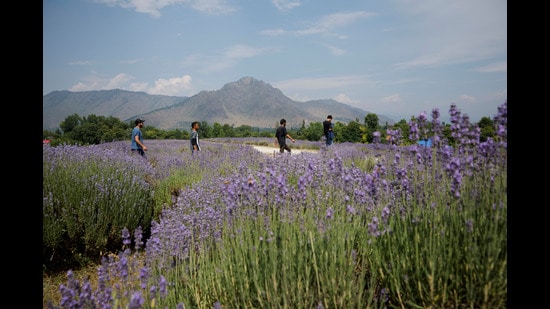India is currently hailed as the third largest startup ecosystem in the world and is home to some of the fastest growing unicorns. This impressive growth dates back to Prime Minister Narendra Modi’s speech at the Red Fort in 2016, when he proclaimed, “Startup India, Stand Up India.” Since then, the number of startups has skyrocketed from just over 350-400 in 2014 to over 130,000 by 2024, with each of the 110+ unicorns marking a landmark in India’s entrepreneurial journey.

Amid this entrepreneurial boom, India’s agriculture sector is also undergoing a lot of transformation. In Jammu and Kashmir (J&K), agriculture employs around 65% of the population and accounts for around 27% of the Union Territory’s (UT) economy, but has historically faced challenges. The region’s rugged terrain, monkey threats and poor access have limited access to large swathes of land, limiting cultivation to traditional crops such as rice, corn, wheat and pulses, none of which often provide sufficient income for farmers.
Under the Modi government, the Council of Scientific and Industrial Research (CSIR) under the Ministry of Science and Technology launched the Jammu and Kashmir Aroma Arogya Gram (JAAG) project to address some of these agricultural challenges and provide a workaround through alternative crops. Popularly known as the Aroma Mission, this groundbreaking initiative used CSIR’s advanced technology to introduce cultivation and processing of medicinal aromatic plants (MAP), paving the way for India’s purple revolution.
Enrolled farmers were provided with free quality planting materials for half an acre of land and comprehensive training on growing, processing and marketing MAP. This initiative has significantly increased farmers’ incomes and created new employment opportunities in rural areas of the Union Territory.
The lavender cultivation aspect of this young entrepreneur-driven project has shattered the misconception that startups are primarily or even entirely confined to the digital and information technology sector, with many young people quitting high-paying corporate jobs to take up the lucrative business of lavender cultivation. What began as a success story in Bhaderwah, a small town in the remote hilly Doda district, has led to the adoption of lavender cultivation in other districts of Jammu and Kashmir. In fact, many Himalayan states such as Uttarakhand, Himachal Pradesh, Arunachal Pradesh and Nagaland have started similar cultivation practices to boost farmers’ incomes.
CSIR provided all kinds of support at every stage, including adequate technical support, from cultivation to distillation, a dedicated facility for development of a wide range of lavender products, to coordinating market linkages with the industry. Currently, lavender is cultivated in over 1,300 hectares in Jammu and Kashmir, with notable progress being made in Ramnagar. Tehsil Awareness campaigns on the profitability prospects of farms from the plant were also conducted in Mendhal, Poonch and Rajouri in Udhampur district.
The impact of this initiative is being recognised nationwide: Bhaderwah’s lavender farms featured prominently on the Republic Day stage at Kartavia Pass this year, and the fields have become popular tourist attractions, further boosting the local economy.
In his 99th Mann Ki Baat address to the nation, PM Modi mentioned the role of CSIR in supporting lavender cultivation. This year, 100 kg of fresh lavender oil was extracted from Doda district alone and farmers harvested nearly 10 quintals of dried flowers worth $1.2 billion. ₹800-1,000 pieces per kg. channel (equivalent to approximately 506 square metres) of land produces 80-90 kg of flowers, and the farmer sells the high-quality planting material. ₹45 lakh rupees.
This initiative has not only increased the income of farmers in Jammu and Kashmir but has also opened new vistas for agri start-ups. Multiple opportunities are emerging in the areas of value-added pharmaceuticals and cosmetics. The lavender success story is a textbook example of the powerful synergies between research and academia, industry and local youth entrepreneurship, and more of these are needed to propel the country on its developed path.
Dr Jitendra Singh is Minister of State (Independent Charge) for Science and Technology. The views expressed here are personal.
#Agriculture #startups #blossom #Jammu #Kashmirs #Purple #Revolution